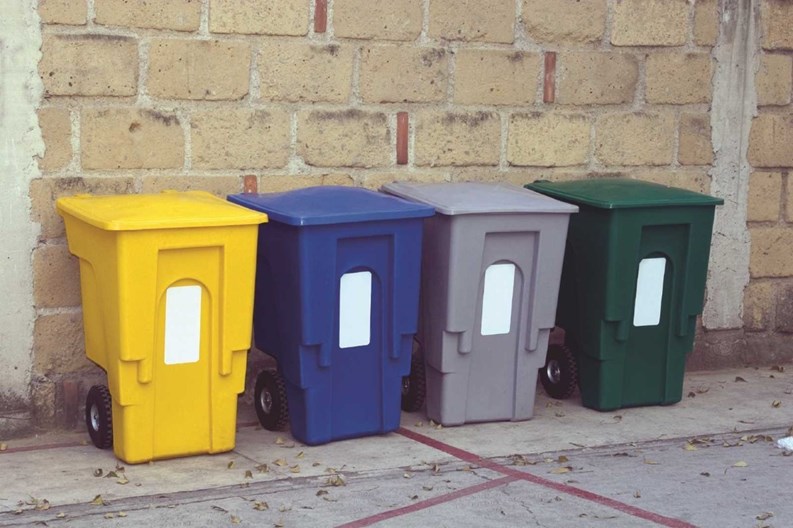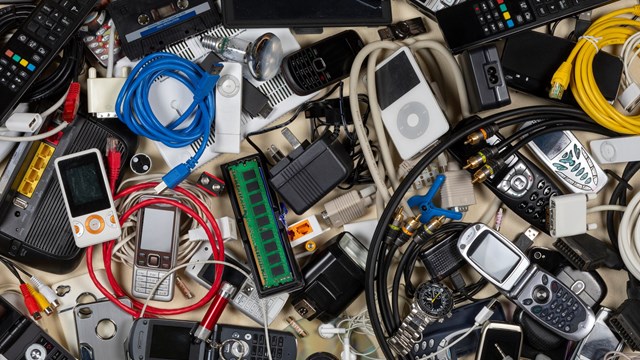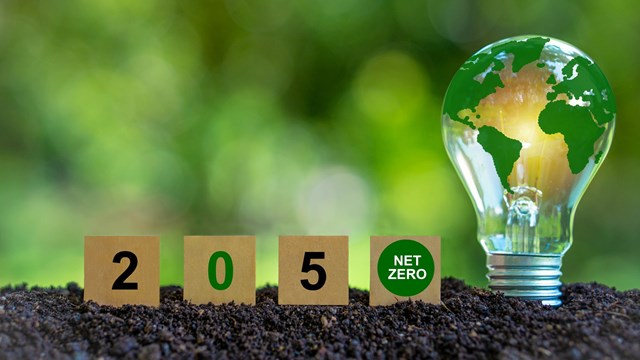It’s hard to believe that recycling was a pretty novel concept not too long ago, especially for municipalities. In the 1970s and ‘80s, local governments started to establish recycling programs due to rising energy prices and a growing concern for the environment. Little by little, in the last 40 years, more and more Americans have made recycling a regular part of their daily lives. When you take out the trash, you also sort the recycling—they’re part of the same routine.
Don’t Get Trashed
In the last few years, the recycling industry has seen new technologies and political energy that are creating some of the largest shifts in how people and cities handle their trash in recent memory. Simply recycling glass bottles and newspapers isn’t the goal anymore. Garbage hauling has become a greater and greater expense for towns and cities. Citizens are more defensive of their surrounding areas, and don’t want landfills sited in their respective communities.
In New York, there simply is no new land to be developed as landfill. For years, Staten Island's Fresh Kills landfill provided the final home for much of New York City's trash—it is now closed, and has been re-purposed as a public park. The city now pays a high price to have garbage hauled away in trucks to Midwestern states like Ohio, where space for landfills is still available. The Bloomberg administration has made some efforts to decrease those hauling costs, and follow the lead of other recycling-heavy cities like San Francisco and Toronto, which have implemented a slew of programs that have found ways to cut down how much refuse gets thrown into landfills.
There are essentially two aspects of recycling that are needed: compliance from residents and businesses, and the infrastructure that collects and sorts the materials. Thanks to new technologies, cities are adopting several new systems for dealing with recyclables. Traditionally, paper and plastics have been kept separately for collection, since they are ultimately broken down and re-purposed separately. But, that is changing.
“'Single-stream' systems allow all designated recyclables—papers and containers—to be collected together. It has the benefits of making it easier for residents to participate, which is now well-documented, and cheaper to collect,” says Kendall Christensen, a senior consultant to InSinkErator, a garbage disposal manufacturer, and former assistant director to New York City's recycling program.
Without the hassle of keeping paper and plastic separate, the whole collection process is simplified, and just as important, it’s less work for residents to sort recyclables. But there is a downside to the single-stream method. “The improvements in processing technology at recycling centers makes it possible to sort and separate various materials, but not without a slight increase in contamination, which can affect marketability of some materials,” says Christensen. Glass bottles become especially problematic in single-stream systems because the sorting technology that separates paper from plastic containers uses size to sort them. It crushes up all the recycling, and in the process glass bottles shatter and shards find their way into the paper or plastic piles unintentionally.
New York City has made some big changes to their recycling system, but the city has not adopted single-stream. “New York City’s system remains dual-stream, both because much of its wastepaper is directed to a paper mill on Staten Island, and the city has committed to a long-term contract with a state-of-the-art recycling facility in Brooklyn that will open this fall, designed solely to handle all types of metal, glass and plastic containers,” says Christensen.
Is that yogurt container a 1 or a 5? Which numbers can you recycle? In New York City, you don't have to find those elusive recycling numbers on plastic containers anymore—every hard plastic can now be recycled together. Plastic bags and other flimsy non-rigid items still cannot be handled by sorting plants, but everything else can. “Adding mixed plastics to recycling programs eliminates confusion and encourages diversion. Markets are still figuring out how to sort and use all of those materials, with some promising new technologies like converting plastics back to oil,” says Christensen.
But there's only so much plastic and paper to recycle. If cities and surrounding municipalities are to cut down more substantially on the trash they send to landfills, the next big contributor is food waste. “As much as 30 percent of apartment-building waste is a combination of food scraps and other compostable materials, making it the next holy grail for waste management professionals,” says Christensen. “Some cities are allowing food scraps to be mixed with yard waste for truck-based collection and delivery to composting facilities, which are being pushed further away from cities to manage odors.”
Reducing Organic Wastes
In the last ten years or so, New Yorkers have taken it upon themselves to set up their own compost bin if they have a backyard, or pay someone to come and pick up their food waste for composting. But those options can be quite difficult for condo and co-op residents. “Mayor Bloomberg announced a new food scrap composting program, so I think we'll be hearing a lot more about how that's going to impact condos and co-ops in New York,” says Brenda Platt, co-director of the Institute for Local Self-Reliance, a think tank based in Washington, D.C.
How does New York City's recycling system compare to the rest of the country? The magic number for recycling advocates is called the diversion rate. The diversion rate is the percentage of all disposable material a city produces—which includes recyclable materials, organic refuse, and regular old trash—that doesn't end up in a landfill or incinerator.
Fifteen years ago, New York performed somewhere in the middle of the pack compared to the other cities—their diversion rate in 2001 was 19%, and that's about where it remains in 2013. The New York City Department of Sanitation (DSNY) expects the new policies previously discussed to bump that up to 30% by 2020.
Meanwhile, San Francisco is leaving every other American city in the dust. As of today, the city by the bay boasts an 80% diversion rate, and has plans to improve on that. “I would say that the cities that are at the leading edge of waste reduction, recycling, and composting, have zero waste planning and zero waste goals. Often when people hear 'zero waste;' we're not going to get to zero waste. It's really a policy framework; you know if you're not for zero waste, how much are you for? Along the same lines of a manufacturer with a goal of zero defects in their products,” says Platt.
Processing Your Trash
Even in the more successful recycling cities like San Francisco, one of the most difficult factors to manage is making it easier for multi-family buildings, including co-ops and condos, to recycle. Large buildings have chutes for garbage collection, but rarely for recycling. “In some communities I've been to, they have the garbage chute; but if you want to recycle you have to walk it across to the bins on the other side of the parking lot, and you'll get 10% to 20% of the residents doing that. To be successful to get high recycling levels, it has to be as convenient as trash,” says Platt. “If you only pick up recycling once a month, but trash is every week—guess what? You’re not going to get as much recycling.”
Recycling is rarely as easy as garbage in a bigger building, especially when you have to hire your own hauler. If your building is outside the five boroughs, your condo or co-op might not be eligible for the town's garbage collection. In Long Island and elsewhere, there are several confusing layers of jurisdictions and municipalities. In Nassau County, for instance, the three townships handle their own recycling programs, whereas Suffolk County has a broader recycling program. But depending on the town, the law requires multi-unit communities to find private haulers.
“Irrespective of whether you have a private or town carter, the responsibility for separating the recycling falls on the carter, not the homeowner. Carters have to separate at a staging area—before the dump—the recycling from other garbage,” says Fairfield Properties’ Alvin Wasserman, director of asset management for condominiums, cooperatives and HOAs in Melville, New York. “In Suffolk County, you don't lose that because it falls on the carter’s shoulders, it’s their responsibility. In that sense, you get 100 percent compliance. There are usually in most multi-family properties, dumpsters that could be four-yarders, eight-yarders, and people put their garbage in those dumpsters indiscriminately,” he says.
In Suffolk County, because haulers are legally-obligated to separate recycling after individuals bag their refuse, all private contracts include recycling. But, in other locales, recycling services may part of the negotiations. “Let's say you have an association's contract for renewal, the bid can now require a green bin for organics, a blue bin for recyclables—and that you have to reduce our trash costs because we're not filling in the garbage bin as much,” says Platt.
Generally, suburban communities do not have the political groundswell to initiate such green initiatives, but it's not impossible if a community is so motivated. “A lot the major haulers like Waste Management are becoming full service providers. Even if your contract renewal isn't up yet, you can still negotiate something. It's in their interest to do it because once their contract comes up, it can go out to an open bid,” says Platt.
Unfortunately, multi-unit communities such as condos and co-ops face several obstacles that prevent them from being on the leading edge of modern recycling practices. That said, a green-minded board and community can always find ways to swim against the current and make their own diversion rates higher, or lobby for more inclusive recycling practices found in other urban areas. More comprehensive plans for dealing with refuse might raise taxes in the short term, but finding landfills and places to burn trash will only become more difficult and more costly as time goes on.
Tom Lisi is an editorial assistant at The Cooperator.







Comments
Leave a Comment